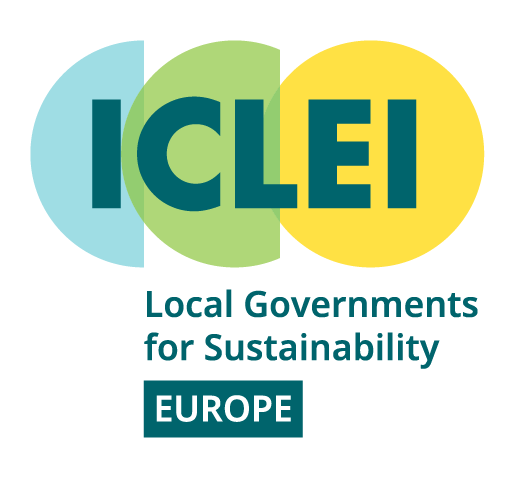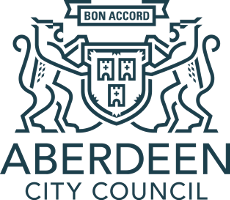Aberdeen
Aberdeen - Fighting fuel poverty through energy efficiency

© Aberdeen City Council
The City of Aberdeen is located in North East Scotland, United Kingdom and is the country's third largest city. Aberdeen's economic prosperity is founded on its position as the Oil Capital of Europe, and the oil and gas industry has historically been central to the regional economy. With the decline of North Sea Oil in recent years, however, the city has sought to diversify its energy sector to include renewable energy.
In addition to strengthening the resilience of the energy sector, Aberdeen City Council has been making strides in relation to its goal to eradicate fuel poverty. Key to achieving this goal is the rollout of a district heating network across the city, which could also result in substantial energy savings.
It all began in 2002!
2002: The introduction of district heating in Aberdeen
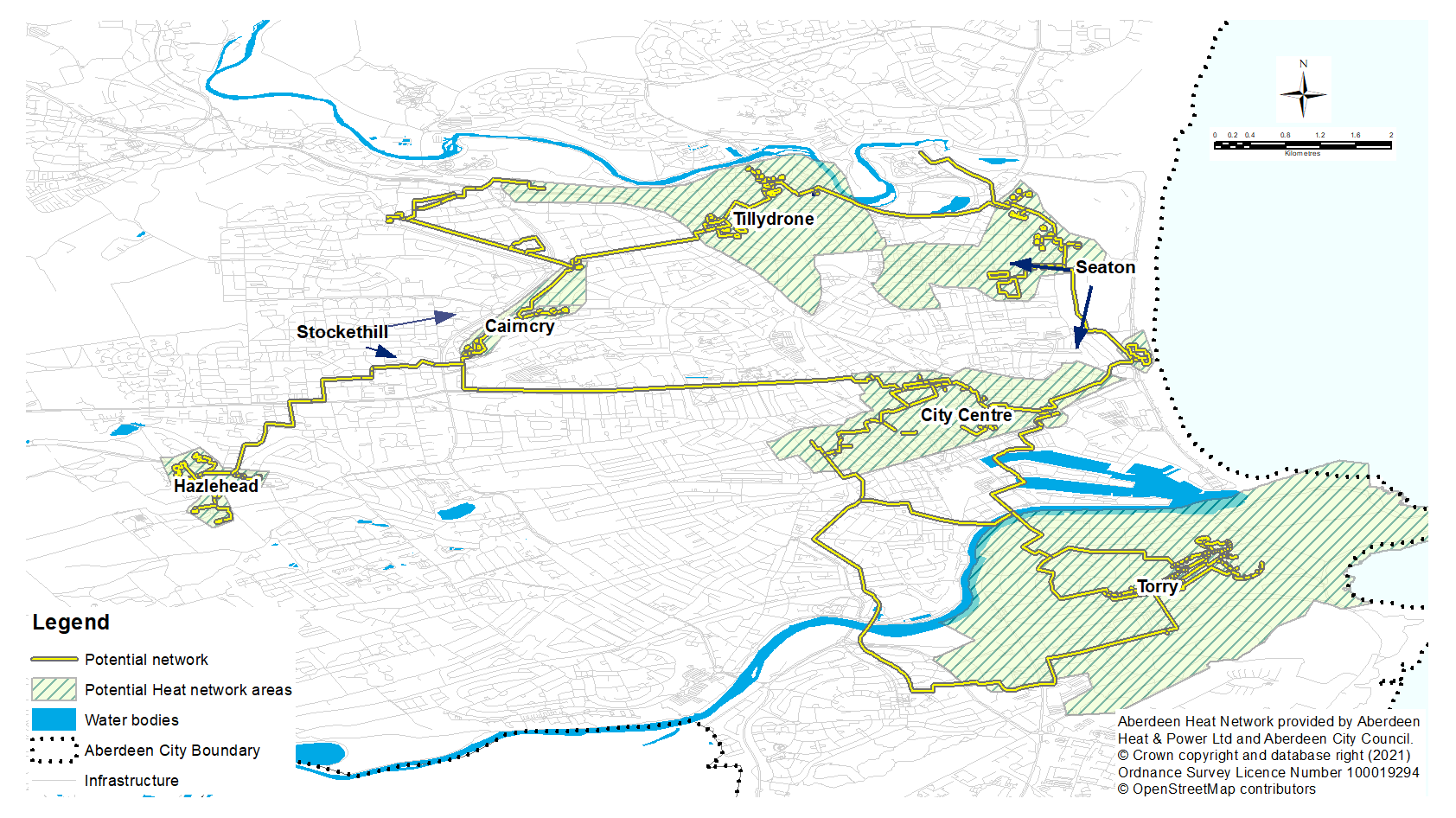
Aberdeen City Council's move towards eradicating fuel poverty through district heating began with the publication of the city's Fuel Poverty Strategy in 2002. In the same year, the Council established Aberdeen Heat and Power as a not-for-profit energy services company to deliver the heat network. Aberdeen Heat and Power collaborated closely with Scarf, a not-for-profit organisation that had been working to eradicate fuel poverty in Scotland since 1985.
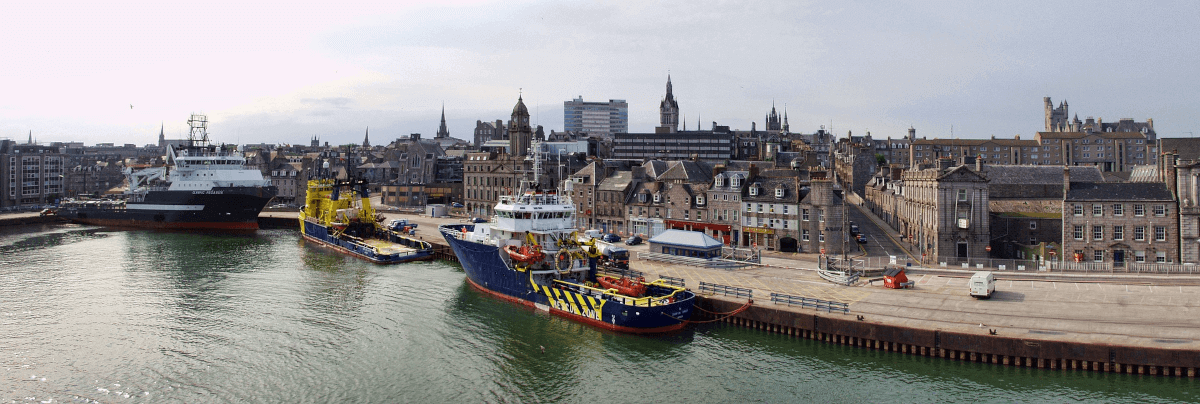
Aberdeen harbour © Aberdeen City Council
In Scotland, a fuel poor household was then defined as one that needed to spend more than 10% of its income on fuel to heat the home to an adequate standard of warmth. Approximately 29% of households in Aberdeen City were characterised as fuel poor at this time, with 9% living in extreme fuel poverty (spending more than 20% of income on fuel).
Aberdeen City Council's primary interactions were with its tenants, Aberdeen Heat and Power, Scarf, funding bodies, and higher-level policy (i.e., Scotland, United Kingdom, Europe).
Scarf has a strong history of engagement with local people and with other local organisations. Since its establishment in 2002, Scarf has formed close collaborations with local community leaders. The local community leaders have proven to be particularly helpful in communicating new energy initiatives to Aberdeen residents and in engaging with potential clients in the area. Scarf further collaborates closely with Aberdeen Heat and Power through staff members in the two organisations.
Aberdeen Heat and Power interacts directly with residents in agreeing on new installations, collecting payments for heat, and in dealing with faults. It also interacts with Aberdeen City Council to agree on pricing, plan new heat network developments, and collaborate on funding applications. The goal of developing the district heating network with Aberdeen Heat and Power was to provide residents with energy based on the cost of supply rather than market-based tariffs, as was the case with the previous energy provider.
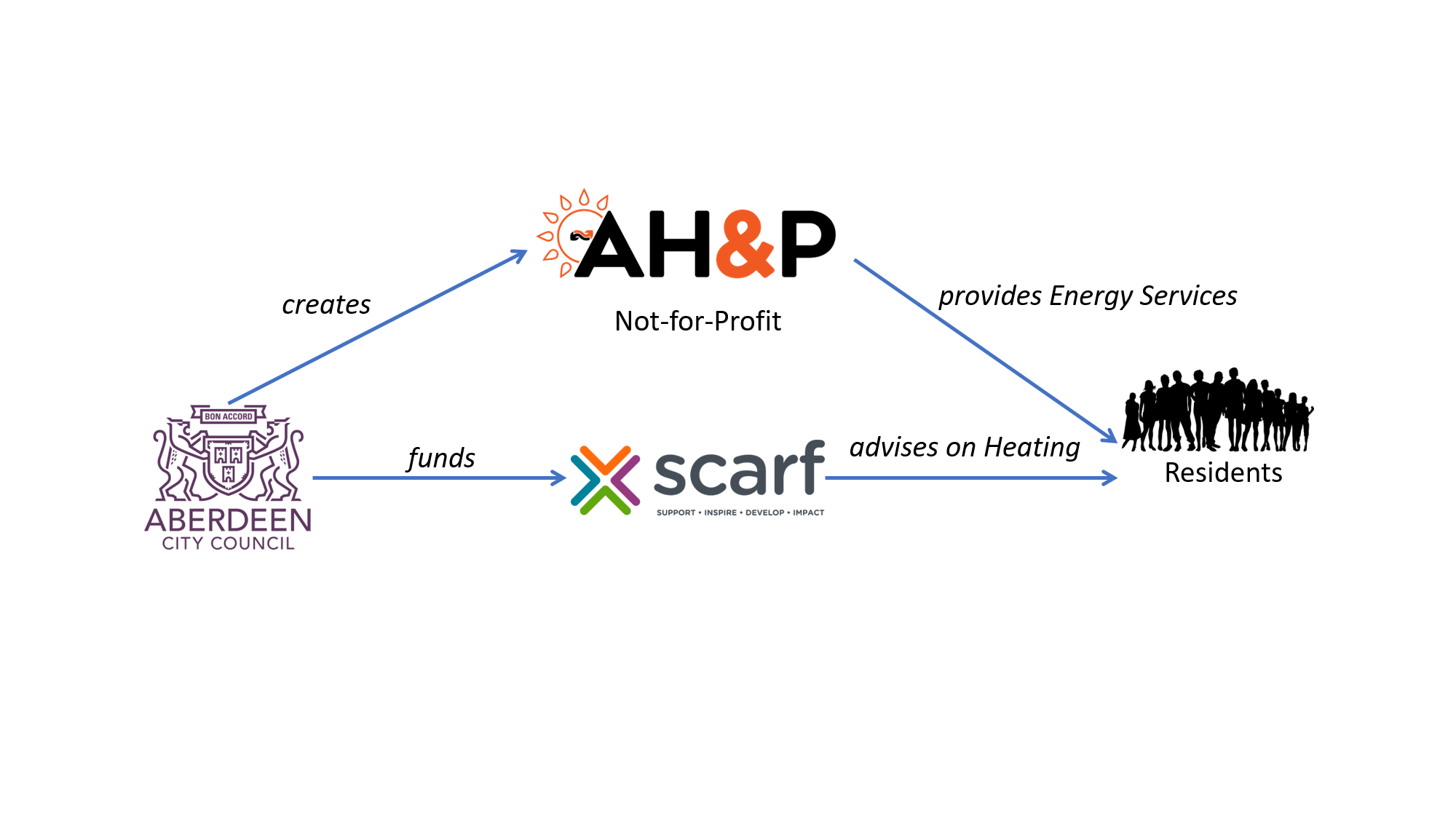
The establishment of Aberdeen Heat and Power and the partnership with Scarf mark the start of an innovative relationship between a local authority, a supply company and a charitable organisation to implement a heat network with the aim of fighting fuel poverty across the city.
2003-2012: The extension of the district heating network across the city
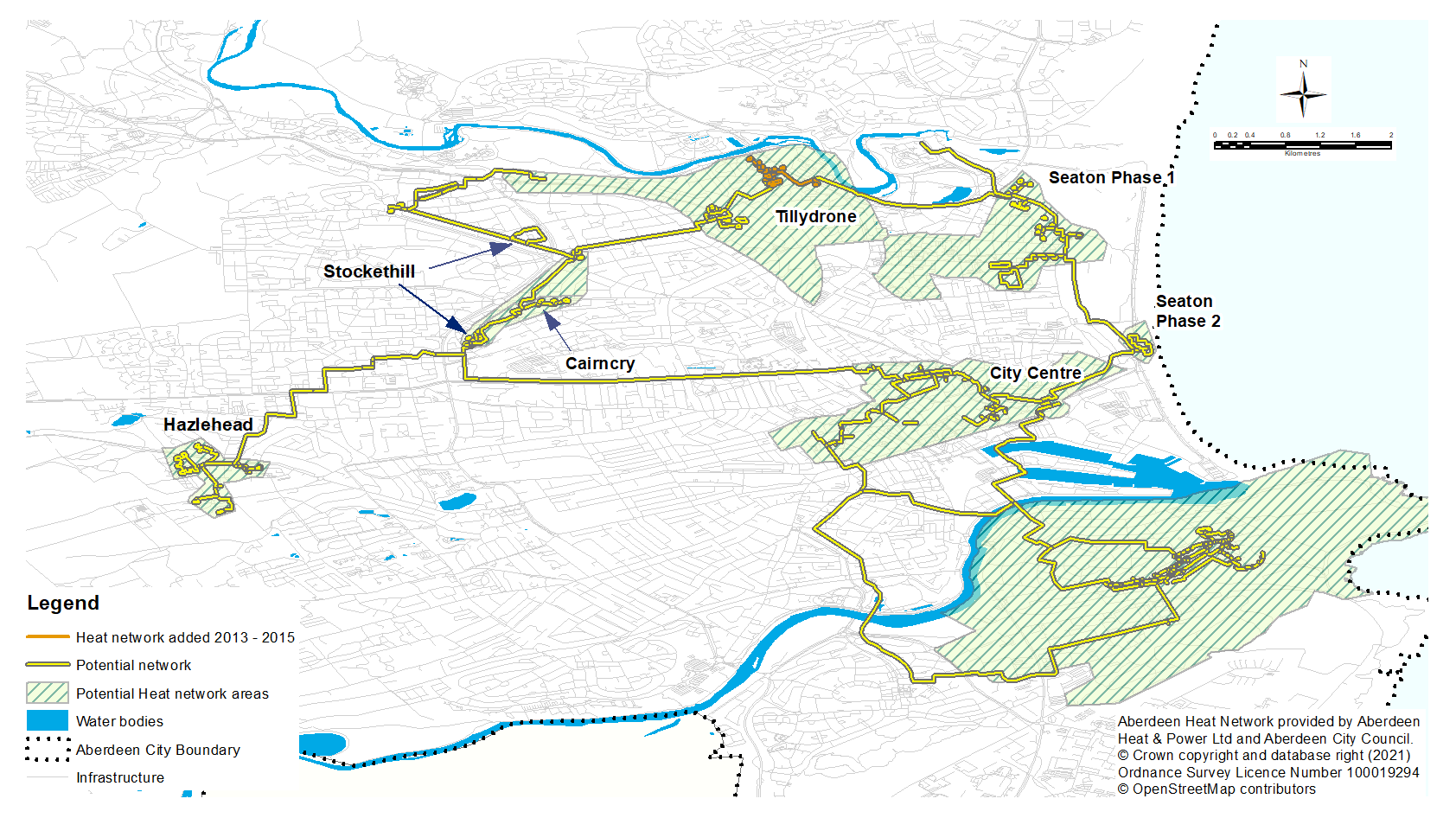
The first phase of the heat network development took place in the Stockethill area of Aberdeen in the period between 2003 and 2005. Within a short period of time, a combined heat and power system that served four high-rise apartment buildings was delivered, connecting 268 households to district heating. The network was partly funded by the United Kingdom's Community Energy Programme, which offered a grant to finance up to 40% of the capital costs of district heating projects. The area of Stockethill was selected based on the condition of the building fabric, the technical feasibility of installing the infrastructure, and considerations of political and social acceptability.

Multi-storey blocks © Aberdeen City Council
Building on the example at Stockethill, a combined heat and power system was developed at Hazlehead Academy in 2006. The system provided heat to the school, a sheltered housing scheme, Aberdeen City Council premises and four multi-storey blocks comprising 209 properties. A subsequent development in the Seaton neighbourhood reached a further 14 blocks and more than 1,000 properties in two phases (2007-2008 and 2011-2012), as well as a health village, leisure centre and the City Council headquarters.
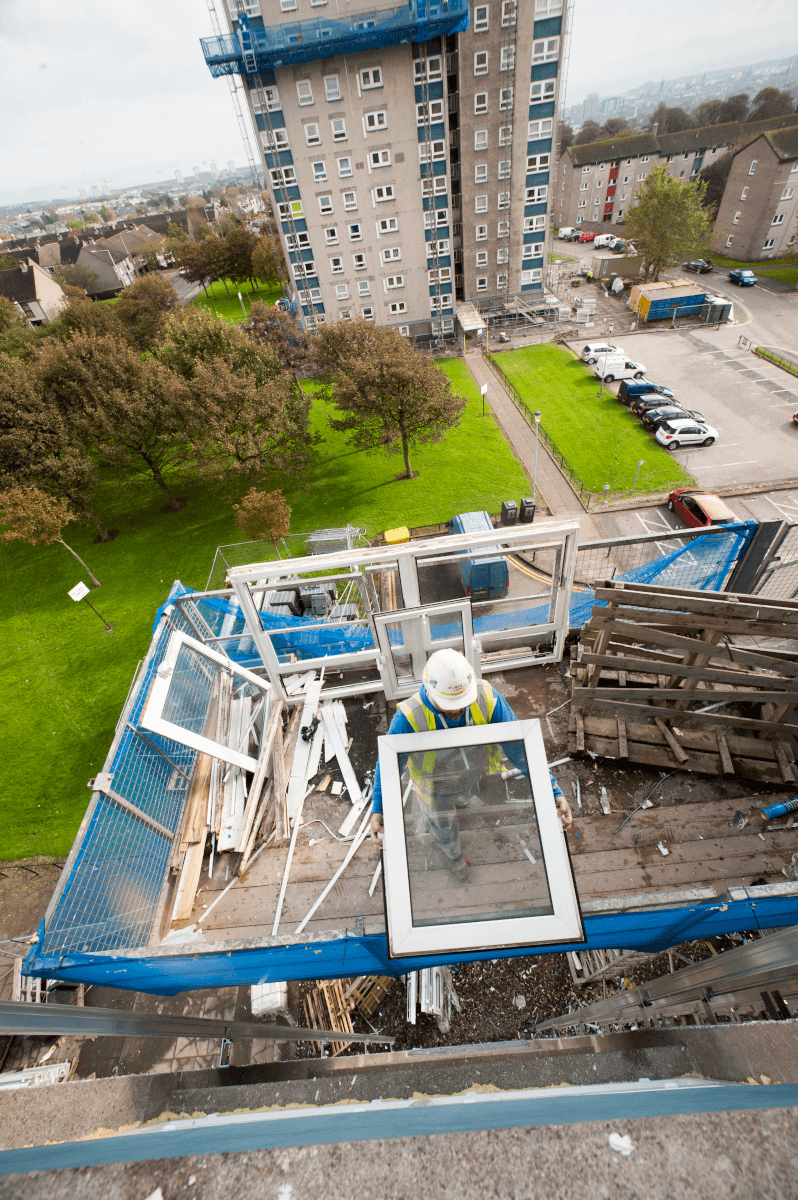
Multi-storey blocks © Aberdeen City Council
As with the Stockethill development, the Hazelhead heat network and the first phase of the Seaton network were also partly funded by the United Kingdom's Community Energy Programme. Due to the short-lived nature of the Community Energy Programme (2002-2007), however, other sources of funding had to be secured to enable further development of the heat network.
Aberdeen City Council, Aberdeen Heat and Power and Scarf put their partnership into action during the large-scale expansion of the district heating scheme across the city, serving residential properties as well as public buildings.
Both Aberdeen City Council and Aberdeen Heat and Power were involved in a number of community engagement activities during this period. Aberdeen City Council further worked together with the local community centre, local credit union, and schools to promote the uptake and expansion of the heat network, while Aberdeen Heat and Power collaborated with the community policing team to help its contractors gain a better understanding of the broader community issues in the area.
Aberdeen Heat and Power assessed costs related to the district heat network against minimum income levels in terms of proportion of income and costs on an annual basis using baseline estimates. If it was identified that individuals were at risk of affordability issues, Aberdeen Heat and Power contacted them to verify if this was the case, and provided information which could provide them with additional support.
Scarf, on the other hand, was responsible for the "Home Energy Check" forms that were completed by residents. The responses in the forms were helpful in identifying potential thermal inefficiencies and thereby also strengthening the promotion of the district heat network.

This period saw the establishment of the district heat network in one neighbourhood and its subsequent expansion to two further areas, encompassing more than 1,500 properties in communities facing some of the highest levels of fuel poverty in the city.
The partnership of Aberdeen City Council, Aberdeen Heat and Power, and Scarf and the division of tasks among them worked to make the establishment of the district heat network and its expansion possible.
Aberdeen Heat and Power revised its website in an effort to enhance communication methods and featured news articles focussing on heat network developments. It participated in both daytime and evening events that were organised for residents at the early stages of the development process in order to present network development plans and the steps in which they were to be implemented. In cases where properties managed by the City Council were concerned, community engagement additionally involved working together with housing officers. Aberdeen Heat and Power also participated in a number of local community planning and corporate social responsibility events as well as in events with local business associations. Aberdeen Heat and Power even created a position called Residential Connections Services Manager to ensure that customer engagement were maintained throughout the client journey and individual needs met. Residents were given the possibility to reach out with any questions or concerns both during and after the installation of the heat network.
Aberdeen City Council led community engagement events, which Aberdeen Heat and Power also participated in. The Council worked together with the local community centre to promote the district heat network, encourage the uptake of measures, and provide general energy saving advice. The Council worked with the local credit union and schools to promote the uptake and expansion of the heat network and encourage financial planning and saving. Moreover, the Council collaborated with representatives from the local community group to more effectively and widely spread the information among the Eastern European population in the area, by overcoming potential language barriers.
As an incentive, community members were eligible to receive donations for completing the "Home Energy Check" forms led by Scarf as well as for referring the district heat network to another community member. Scarf was responsible for transferring form responses into a database that then provided an energy saving report. The responses were helpful in identifying potential thermal inefficiencies, which then led to a referral for a home survey from a heat network installer appointed by Aberdeen Heat and Power. All installers attended a fuel poverty awareness course to help them to identify households that may have needed additional support from the City Council's energy advocacy service that was managed by Scarf.
2013-2015: Getting a good DEAL through commercial expansion

In 2013, Aberdeen Heat and Power established a commercial subsidiary company, District Energy Aberdeen Ltd (DEAL), to focus on connecting commercial businesses to the expanding Aberdeen Heat Network. DEAL fed profits from this venture back into Aberdeen Heat and Power to help fund the continued connection of domestic properties and public buildings to the heat network.
In addition to the profits from DEAL, other sources that helped to fund the continued development of the heat network included grants through schemes such as the Carbon Emissions Reduction Target, Community Energy Saving Programme, and Energy Companies Obligation.
Between 2013 and 2015, a further combined heat and power system was installed at Tillydrone, an area located in the north of the city. As a result, seven more City Council housing blocks, comprising 450 properties, as well as a school, a church and a health club were supplied by the heat network. The Stockethill network was further extended to Cairncry in 2014 and work also ensued to extend the Seaton network to the city centre.
Aberdeen Heat and Power established District Energy Aberdeen Ltd (DEAL) as a wholly owned subsidiary to channel all of its transactions with non-residential customers other than Aberdeen City Council. It was organised as a for-profit private limited company, with a separate and independent board, purchasing bulk heat from Aberdeen Heat and Power to sell on to its own customers.
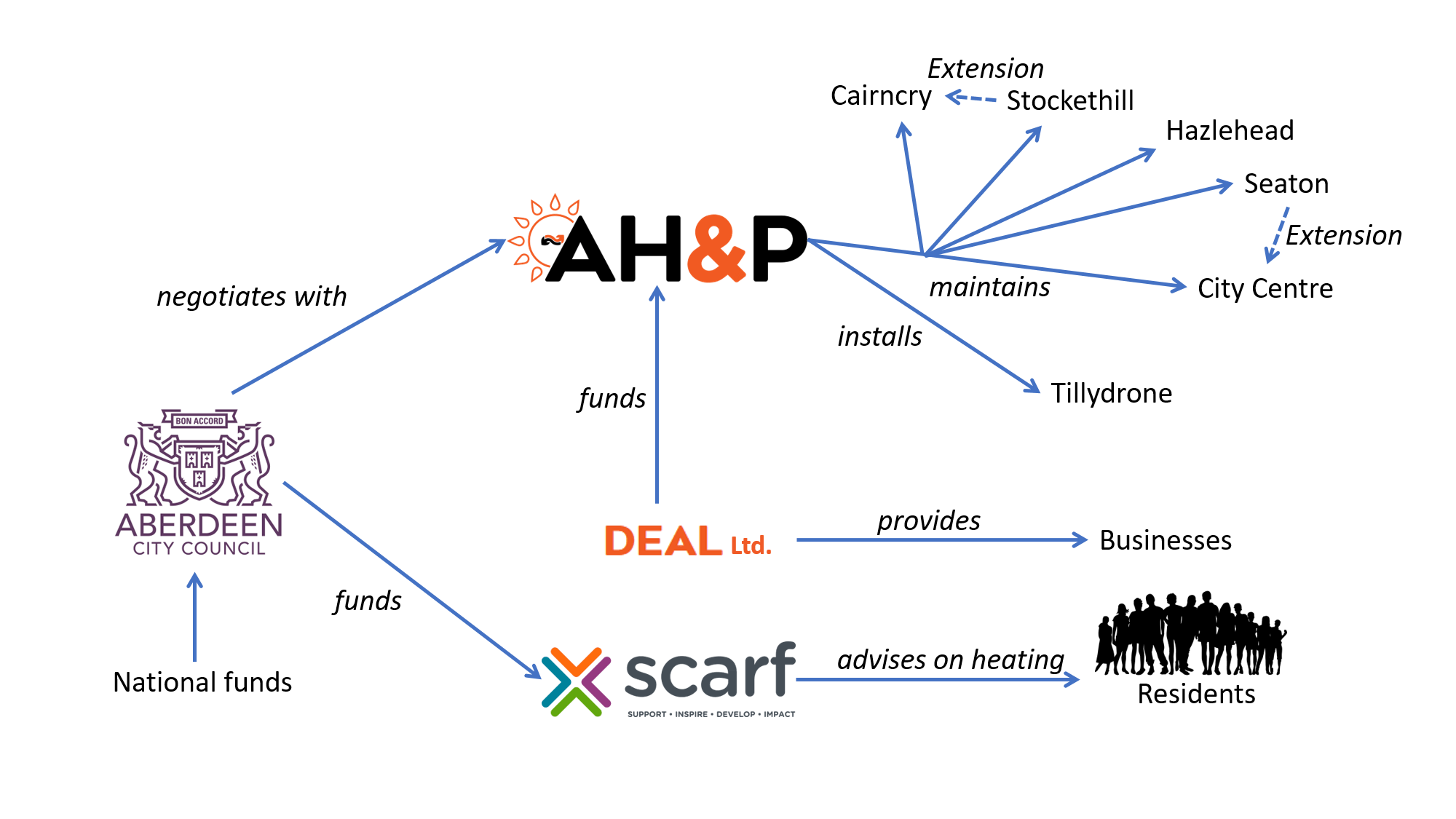
The establishment of District Energy Aberdeen Ltd extended opportunities for connecting to the heat network to private sector businesses and generated funds that could be fed back into Aberdeen Heat and Power to fund further expansion of the network to social housing and public buildings.
2016-2019: Energy from waste and expansion south of the river
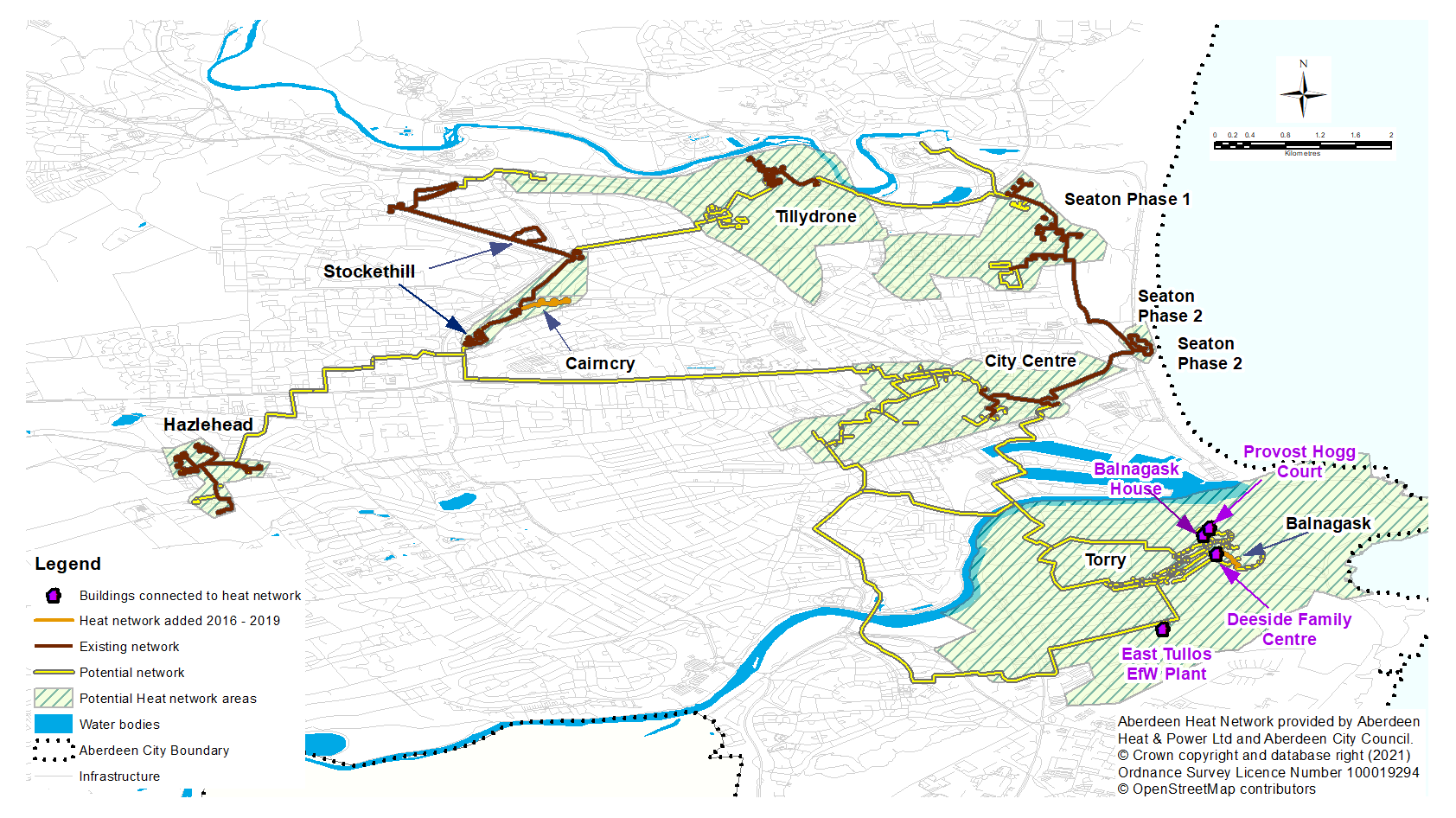
In 2016, Aberdeen City Council published its Sustainable Energy Action Plan, setting out targets for carbon emission reductions of 31% by 2020 and 50% by 2030 (from a 2005 baseline) and a vision to eradicate fuel poverty by 2030. Central to the plan was the development of an energy-from-waste plant, with a view to using the heat generated by the incinerator to expand the heat network to the neighbourhood of Torry, which has an estimated population of around 10,500 inhabitants. Torry lies to the south of the River Dee and is one of the most deprived areas of the city.
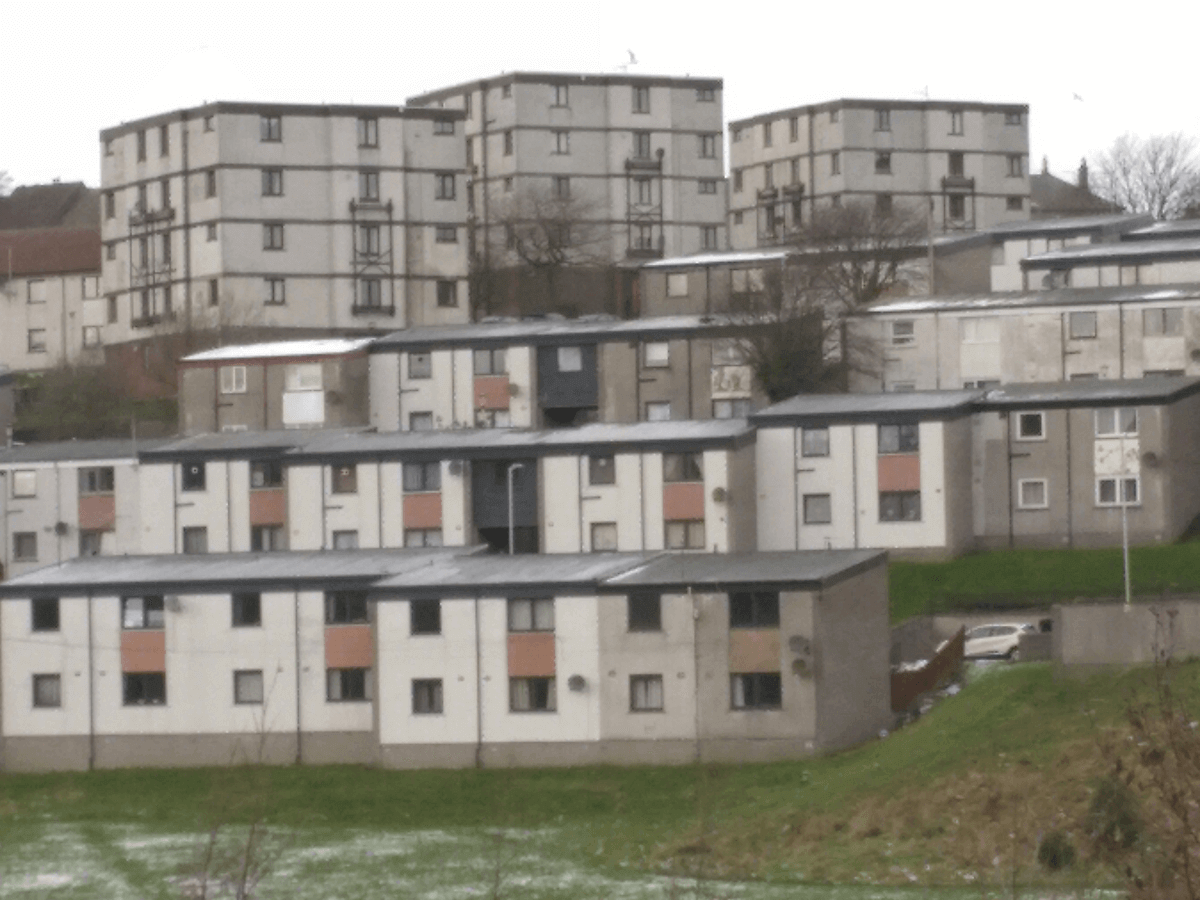
Houses in Torry © Gary Polhill
Following a feasibility study, city councillors granted planning permission for the energy-from-waste plant and related Torry heat network in 2019. The network first served three multi-storey blocks and was extended to three municipal buildings (Balnagask House, Provost Hogg Court, and Deeside Family Centre) through a pilot project facilitated by the EU-funded Interreg Heatnet NWE project.
In 2018, a new engine was added at the Beach Leisure/Ice Arena as part of the effort to extend the Seaton network to the city centre.
Because of stipulations introduced by the Interreg Heatnet NWE project, Aberdeen City Council was not able to award the contract for the realisation of the first stage of the Torry network development directly to Aberdeen Heat and Power, despite its long presence and expertise in the area. Instead, in order to comply with European regulations, the project was put out to tender and was awarded to Nicol of Skene, a local civil engineering contractor.
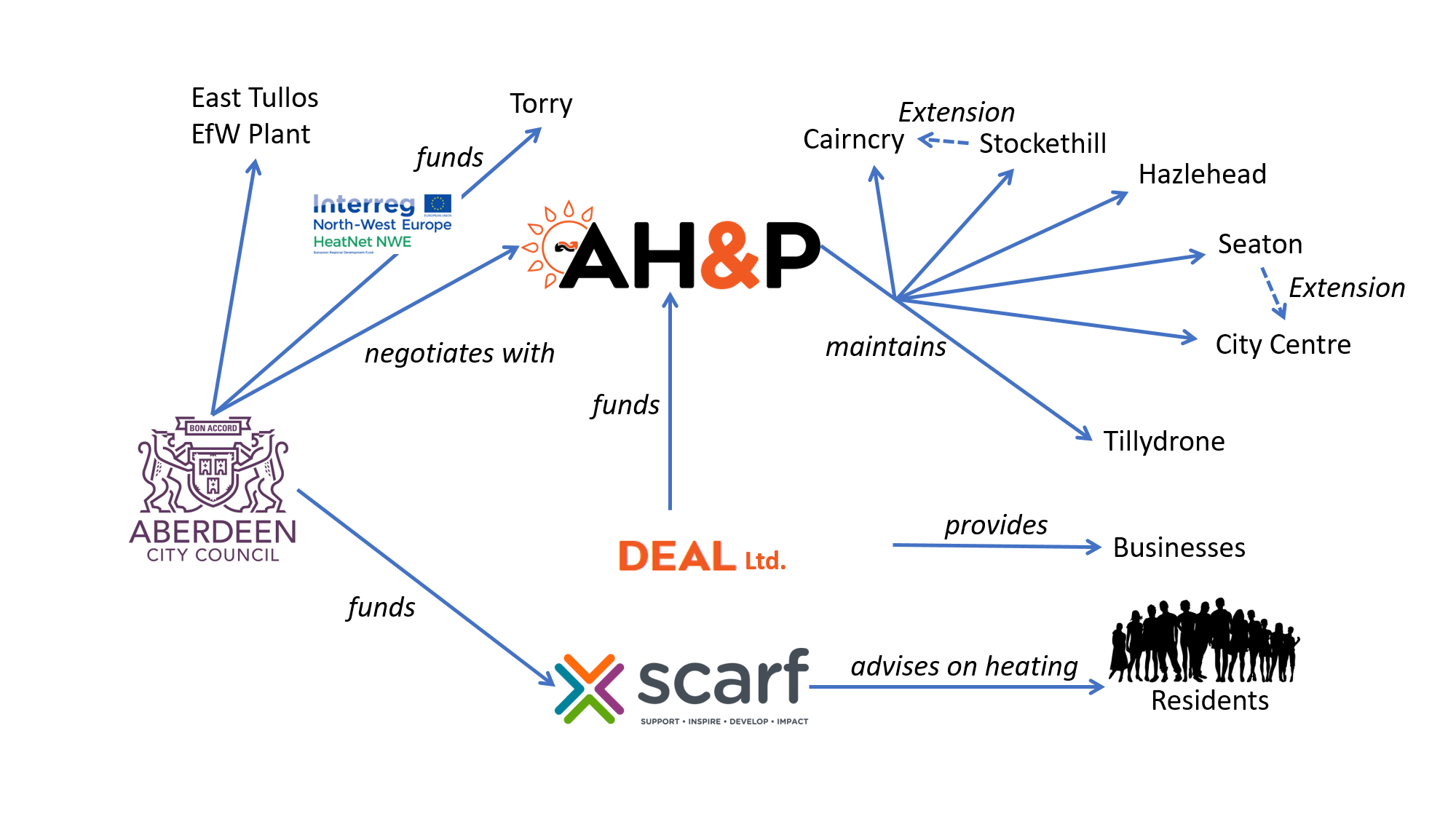
The energy-from-waste plant processes non-recyclable waste from Aberdeen City, Aberdeenshire and Moray Councils, and produces both electricity for the national grid and heat for Torry's district heating network.
2021 (Present)
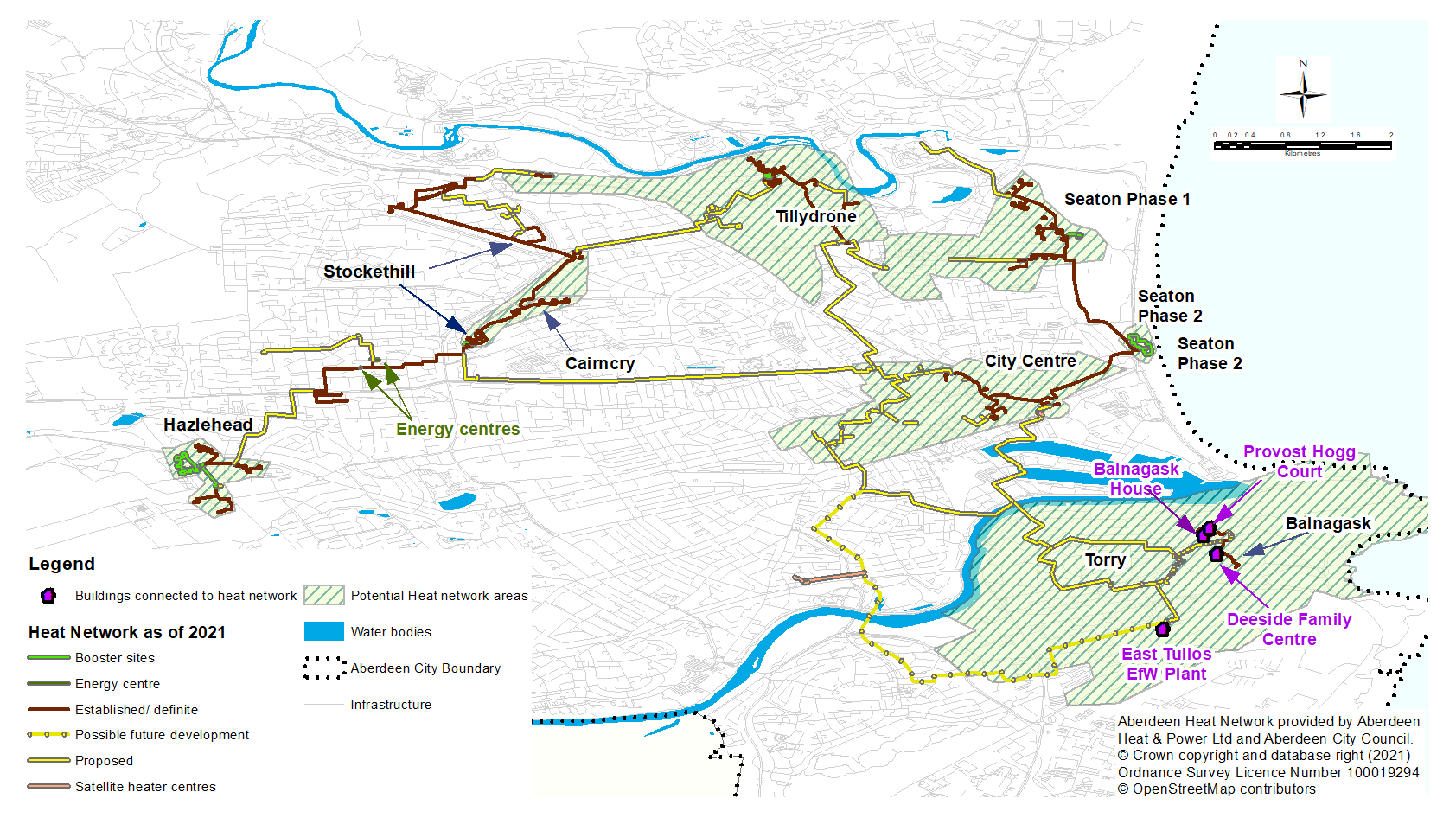
This is a 'live' case in that the research is taking place at the same time as the heat network continues to develop and the policy context continues to evolve.
Discrete heat networks in Aberdeen have been planned by Aberdeen Heat and Power to strategically link to one another to form a large network. The developments in Torry are isolated from these networks due to the need to cross the river to come into the city. The ability to connect the Torry network to the rest of the network will rely on available funding and the benefits of connecting to the existing heat network.
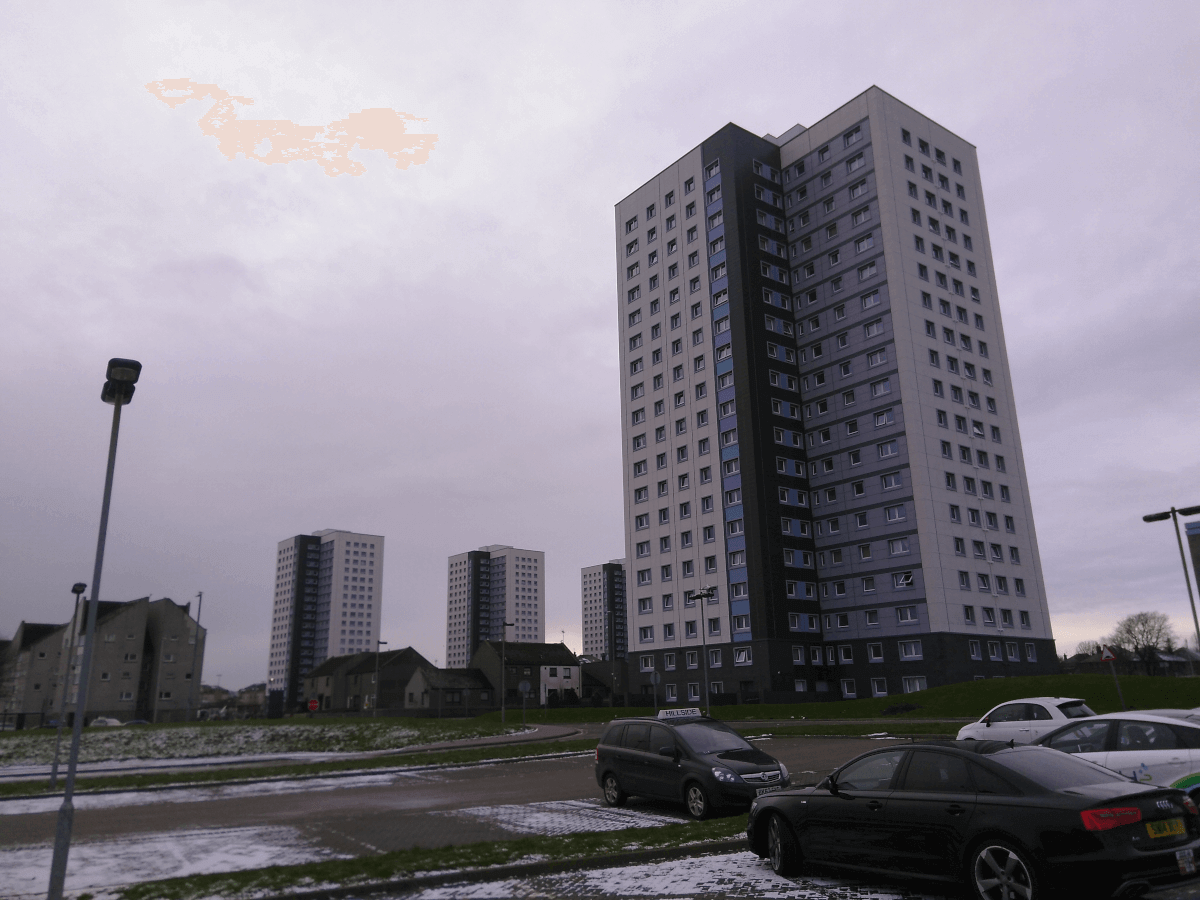
Multi-storey block in Torry © Gary Polhill
The key social innovation in the case of Aberdeen relates to creating new ways of organising the supply of heat in order to tackle fuel poverty. This was done by establishing Aberdeen Heat and Power as a not-for-profit company, which continues to be the City Council's close partner and lead in taking forward the infrastructural development and operational aspects of the Aberdeen Heat Network.
On 30 March 2021, the Heat Networks (Scotland) Act was passed to encourage greater use of heat networks by providing license and regulation arrangements. The Act responds to the target of net zero carbon emissions by 2045, as set out in the Climate Change (Emissions Reduction Targets) Act 2019, by putting in place measures that will help to cut emissions, lift people out of fuel poverty and create "green" jobs.
Aberdeen's 20-year history of implementing heat networks means that it is leading the way for further developments across Scotland. Most recently, the Aberdeen Heat Network has expanded to encompass North East Scotland College and Aberdeen Science Centre. In the future, it is hoped that the various networks in operation across the city can be linked to enable development in the city centre.
Exploration
In the exploration section you will be able to take a look at some alternative policy scenarios in the case of Aberdeen – and how they have been modelled using Agent-based Modelling (ABM). Before you explore the videos, find out what ABM is about in the introductory video below.
Now, you should be ready for the policy scenarios. Each scenario looks at the impact of a specific measure or event that deviates from what has factually happened in the past. For Aberdeen you can choose the following scenarios in the tabs:
Summary
We hope this Policy Sandbox Tool storyboard provided some interesting insights and ideas for supporting energy and mobility transitions.
For a final refection on the ABM models that you have seen in the exploration section, see the video below.
For more information on the cases, we invite you to take a look at the following resources:
- SMARTEES website – Cluster on Fighting energy poverty through energy efficiency.
- Our SMARTEES video about Fighting fuel poverty in Aberdeen, covering our study visit to the city of Aberdeen in 2019.
- A presentation of the Aberdeen case and modelling work carried out was recorded during the SMARTEES Toolbox Session at the European Sustainable Cities and Towns conference 2020 (beginning at mark 52:41).
- For analyses and results across the SMARTEES project, look at our reports and deliverables.








